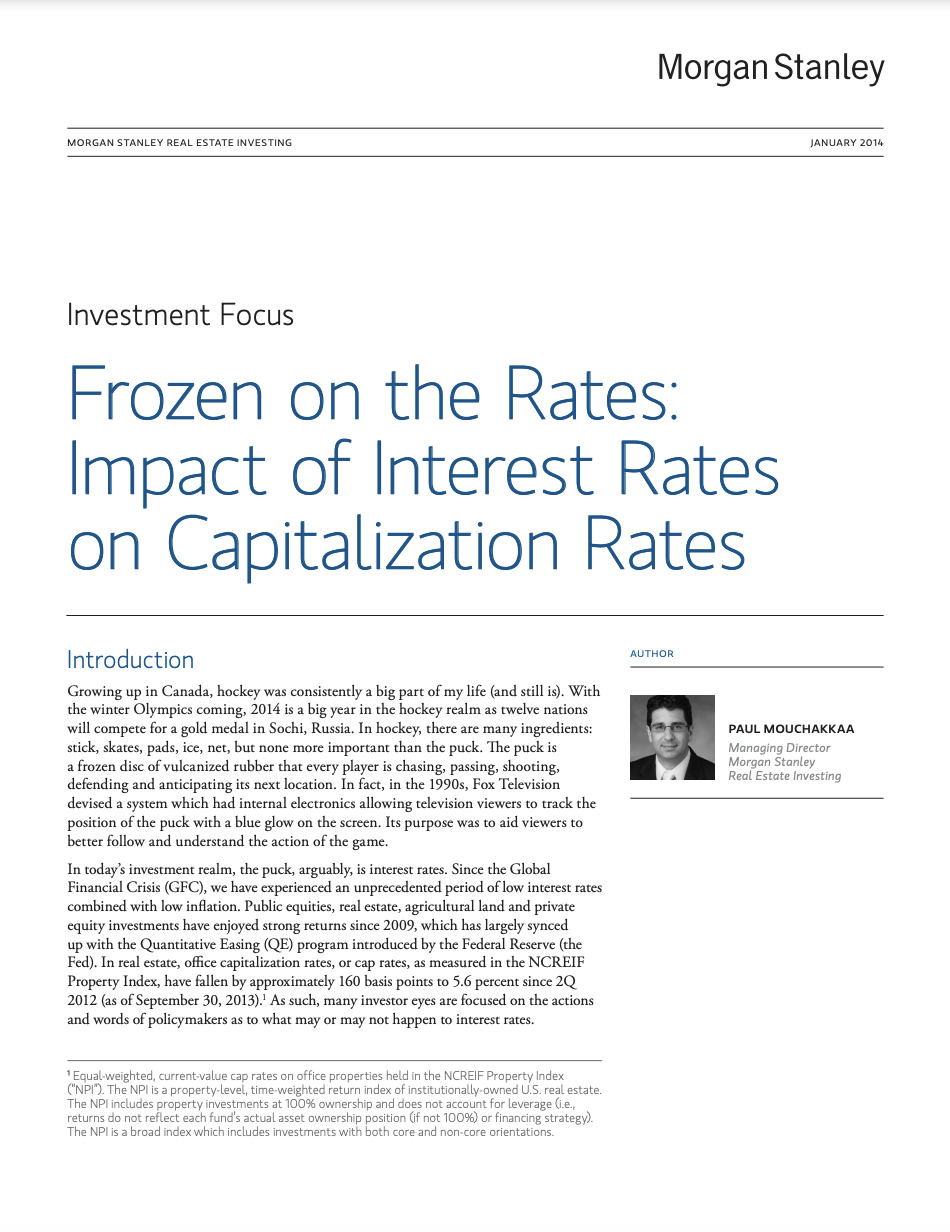
Interest rates vs. cap rates: It's complicated
Ten years ago, a Morgan Stanley real estate researcher had this to say about the relationship between cap rates and interest rates...
------------------------------
1. Credit availability matters
------------------------------
"The influence credit availability has on real estate values simply cannot be ignored."
"Between October 1998 to May 2000, U.S. Treasury rates increased 191 bps while the stock of U.S. commercial real estate mortgages rose by over $450 billion. This resulted in a fall in cap rates of 32 bps over the same period and 5 bps, one-year forward."
"In contrast, during the early 1990s (December 1989 to October 1990), U.S. Treasury rates increased 88 bps, while lending stock scaled back by over $50 billion. In this instance, cap rates increased by 68 bps over the same period and 150 bps, one-year forward."
------------------------------------------
2. Supply-demand dynamics also matter
------------------------------------------
"During the late 1980s, supply grew well ahead of potential demand. From 1985 to the end of the decade, approximately 700 million square feet of office came online versus absorption of 526 million square feet. Further, construction financing grew at a compound annual growth rate of 23.5 percent between 1984 and 1988."
"Looking at the lead up to the GFC, approximately 262 million square feet of office came online while absorption was only 48 million square feet. This time around, construction financing grew at approximately 18 percent between 2004 and 2008 as condo conversions and residential housing projects exploded in growth."
"Essentially, the glut of supply and pullback of credit led to a rise in cap rates in the early 1990s whereas, a large fall in demand (starting in 2008) coupled with little credit availability caused the most recent rise in cap rates during the GFC."
------------------------------
3. In conclusion: Who knows
------------------------------
"It is not easy to draw a firm conclusion on what may happen to cap rates and real estate values should interest rates climb. It is very difficult and challenging to try to react accordingly with precision to a variable as unpredictable as interest rates."
"The puck has a tendency to bounce around unpredictably and randomly. To overreact or put too much focus only on rates would not necessarily serve the goals and objectives of investors. Being mesmerized or frozen by the puck may lead to being left out in the cold."
----------------------------
Our take: Interest rates and property values aren't perfectly correlated. Directionally, values are lower than they were a few years ago. But perhaps we'll be somewhat pleasantly surprised with where some values land when transaction activity resumes.
What's your take?
A. The "doom loop" is overplayed
B. Cap rates and interest rates move in sync
C. Look out below









COMMENTS